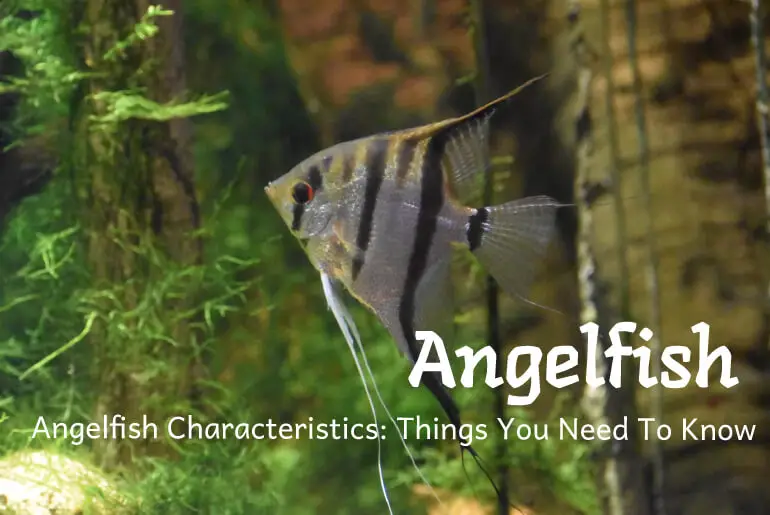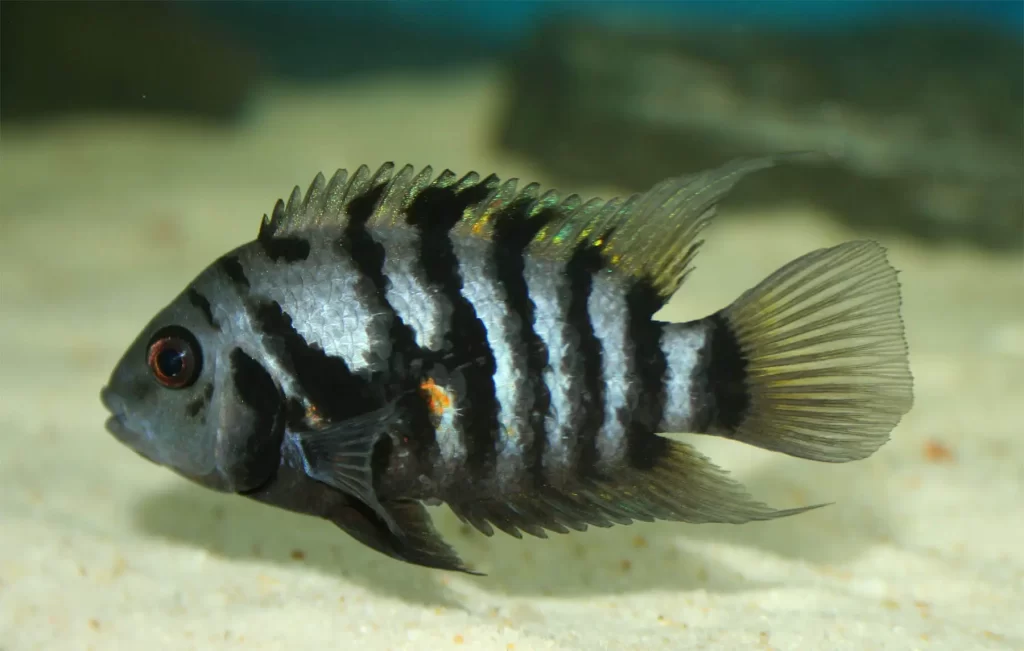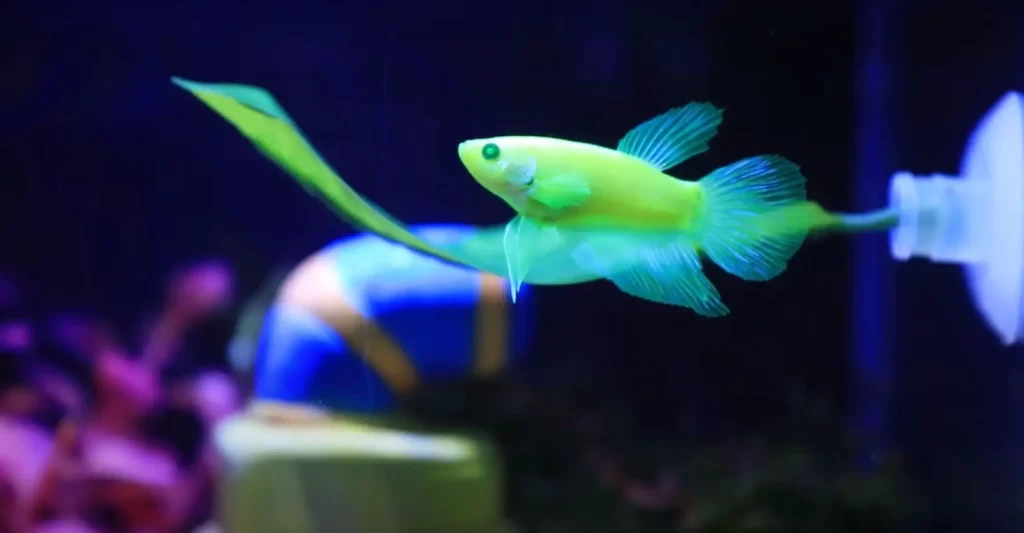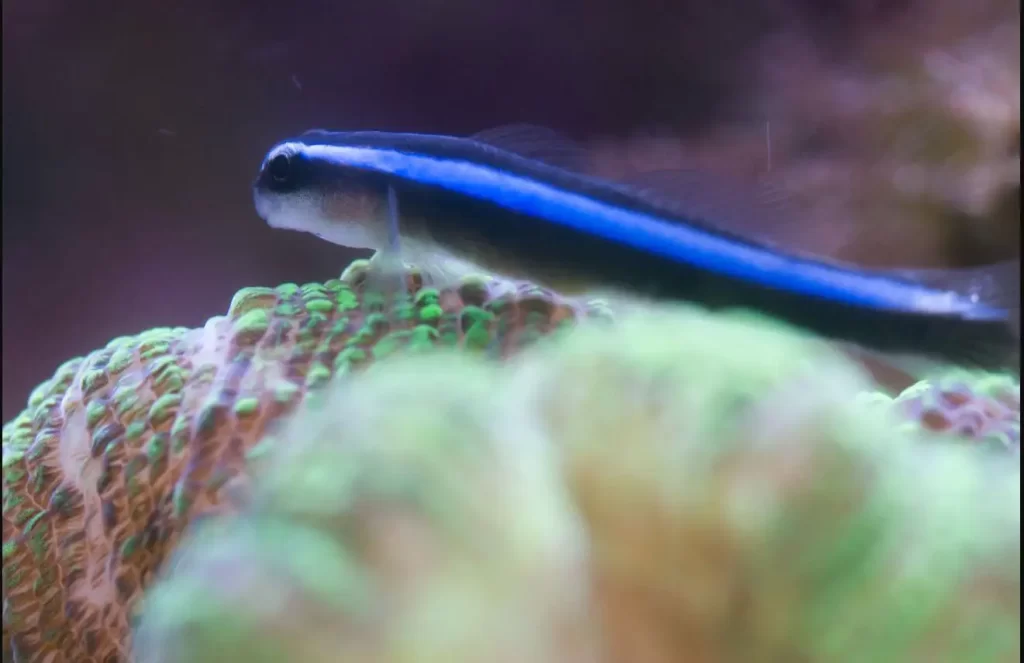When you think about keeping fish, you usually go for fish that are easy to care for and don’t require too much work. One such amazing fish that are both low-maintenance and beautiful is the Angelfish. Besides their amazing color, Angelfish have many other characteristics that make them stand out in your aquarium. Do you know what are these angelfish characteristics are?
Angelfish have peculiar characteristics that make them one of the most beautiful fish in the world. Some of these characteristics are:
- Angelfish have a very long lifespan. Usually, these can live up to 15 years if well taken care of!
- These beautiful fish are easy to take care of and don’t require too much work.
- Angelfish are very peaceful creatures and get along well with other fish in the aquarium.
- Angelfish are very sensitive to environmental changes and need a stable tank to thrive.
If you are thinking of getting angelfish, this post is for you. I will discuss some of my personal experiences and the facts that I have found after researching them. I am sure enough that you will get the answer to all your queries here. So, follow me through.
What Type Of Fish Is Angelfish?
Most people think that Angelfish are freshwater fish, while others assume them to be salt water. However, there is an interesting fact that many owners miss before buying angels is that angelfish can be both saltwater and freshwater. Confused! Let me make it more clear.
Actually, there are basically two types of Angelfish freshwater and saltwater angels. While the freshwater angelfish belongs to the Cichlids family, the saltwater Angelfish come under the Pomacanthidae family. These two angels are completely different from each other in their appearance and habitat.
Usually, the most common among them are freshwater Angelfish. You will easily find them in your local fish store compared to their saltwater cousins. Talking from my experience, I found freshwater angels a little easier to keep. But this might differ with you.
You might either keep both types in separate tanks. Or if you want just one, I would recommend going for a freshwater Angelfish. However, the ultimate choice is yours.
Freshwater Angelfish
Freshwater angelfish are tropical freshwater fish that is popular in the aquarium trade. Angelfish are members of the cichlid family and are native to South America. Angelfish are characterized by their long fins and beautiful coloration.
These types of angelfish come in various colors, including white, black, blue, and yellow. Angels are typically between four and six inches in length but can grow up to eight inches. Also, angelfish are peaceful fish that should be kept with other peaceful fish.
Generally, the freshwater angelfish are of three types Pterophyllum scalare, Pterophyllum altum, and Pterophyllum leopoldi. Among these three, scalare is the most common type of angelfish in the aquarium trade. Therefore, these fish are also known as the common angelfish, scalare angelfish, or angels.
Saltwater Angelfish
Saltwater angelfish are also popular saltwater aquarium fish. These fish are ray-finned fish found in tropical and subtropical waters worldwide. These fish belongs to the sallow tropic reefs in Indiana, Western and Atlantic oceans. Moreover, saltwater angelfish are predators and feed on small fish, crustaceans, and zooplankton.
There are many different species of saltwater angelfish, but the most popular ones kept as pets are the Queen Angelfish, French Angelfish, Flame Angelfish, and Emperor Angelfish. Usually, the average size of saltwater angelfish is about 12 inches, but some species can grow up to 18 inches.
However, one of the most notable characteristics of saltwater angelfish is its bright colors and curved dorsal and anal fins.
Angelfish Characteristics
There’s no doubt that Angelfish are some of the most popular aquarium fish for their beautiful appearance and gracious swimming habits. In addition, angels come in a wide variety of colors and patterns, making them a real standout in your tank. But what else do you need to know about these fascinating creatures?
Here are some of the most important Angelfish characteristics:
Origin Of Angelfish
Angelfish are native to the tropical waters of South America, specifically in the Amazon River Basin. These fish can be found in various habitats, from slow-moving rivers and streams to fast-flowing waters. Usually, these little creatures are found in shallow waters near the shore.
Size Of Angelfish
Angelfish can range in size from about four inches to a little over a foot long. The average size of an Angelfish is six to eight inches. In the wild, you can find Angelfish that are up to a foot long but very rare. However, Angelfish can grow even larger in captivity than in the wild.
Color And Pattern Variations Of Angelfish
There are many different color and pattern variations of Angelfish. The most common colors are black, silver, gold, and blue. Moreover, you can also find Angelfish that are white, orange, yellow, or green. The color and pattern of an Angelfish can vary depending on the specific species and even the location where these fish are found.
Angelfish have two long dorsal fins and two pectoral fins. Furthermore, these fish also have an adipose fin, a small, fleshy fin between the dorsal and caudal fins. The caudal fin of an Angelfish is forked, and their bodies are laterally compressed. This means angels are flattened from side to side, giving them a disc-like shape.
Life Span Of Angelfish
The average lifespan of an Angelfish is five to ten years, but some have been known to live for up to 15 years. Therefore, it is believed that angelfish live longer in captivity than in the wild.
Care Of Angelfish
Angelfish are not recommended for beginner aquarium hobbyists because these require special care and attention. In addition, angels are very sensitive to water conditions and can be easily stressed by environmental changes. Therefore, it is important to have a well-established aquarium before adding Angelfish to your tank.
Angelfish are also very sensitive to medications and can be easily killed by them. Therefore, it is important to consult with a veterinarian or experienced aquarium hobbyist before treating your Angelfish with any medication.
Diet Of Angelfish
Angelfish are omnivores, meaning these fish will eat plants and animals. Their diet consists of small insects, crustaceans, and other invertebrates in the wild. If you give them, your little buddies will also eat algae and other plant matter. In captivity, Angelfish should be given a variety of foods to ensure that your fish get all the nutrients that are needed.
Some of the best foods for Angelfish include:
- Bloodworms
- Brine shrimp
- Daphnia
- Krill
- Mysis shrimp
It is also a good idea to supplement their diet with spirulina, a type of blue-green algae. This will provide them with the necessary vitamins and minerals to stay healthy.
Breeding Of Angelfish
Breeding of Angelfish is not recommended for beginner aquarium hobbyists because it is a very difficult and time-consuming process. It is best to leave the breeding of Angelfish to experienced breeders.
The male angelfish has very small and pointy genital papillae that are only visible during mating. The female angelfish has a much larger and rounder genital papillae. But mating them is very complicated because of the aggressive nature of the male. Therefore, keeping at least two females for every male is best when breeding.
During spawning, the male will wrap his body around the female and fertilize her eggs as she lays them. Then, it is best to separate the angelfish and eggs. Then, the eggs can fend for themselves and hatch on their own.
Hatching and Raising Angelfish Fry
Once the eggs have hatched, you will need to raise the fry. Generally, this is a very difficult and time-consuming process because angels are delicate and sensitive.
The best way to raise Angelfish fry is to keep them in their tank. This tank should have a soft, sandy substrate and plenty of hiding places. The water should be clean and well-filtered. You will also need to provide them with live foods, such as brine shrimp or bloodworms.
You can slowly introduce them to flake food and pellets as your angelfish grow. But it is important to remember that your little buddies will still need live food for the first few months.
If you are not experienced in breeding and raising fish, it is best to leave the angelfish fry to experienced breeders.
Common Health Problems In Angelfish
Angelfish are susceptible to various health problems, some of which can be deadly. Some of the most common health problems in angelfish include:
- Fungal infections
- Bacterial infections
- Protozoan infections
- Virus infections
It is important to consult with a veterinarian or experienced aquarium hobbyist if you think your Angelfish are sick. The best way to prevent health problems in Angelfish is to maintain a clean and well-filtered aquarium.
Angelfish are beautiful, exotic fish that are a great addition to any aquarium. But it is important to remember that your angels require special care and attention. So, how would you care for an Angelfish?
How To Care For Angelfish?
I know angelfish fish are hard to ignore at the pet store. Usually, these fish have long, elegant fins and bright colors that make them stand out in a tank. But, usually, their beauty mesmerizes everyone.
If you are fascinated by angelfish and want to keep them despite being a novice aquarist, then you should know about their basic requirements. I have a few angelfish caring tips for you which will make your task easier. They are:
Choose The Right Tank Size For Angelfish
An adult angelfish needs at least 20 gallons of water. A size tank will give your fish room to grow and swim around freely. If you want to keep more than one Angelfish, you will need an even larger tank so your buddies have enough space.
You also need to make sure your tank has a tight-fitting lid. Angelfish are known for jumping out of tanks, so a lid is necessary to prevent them from escaping.
Give Them A Planted Tank
Angelfish are native to the Amazon River basin, so these fish are used to living in a heavily planted environment. Be sure to add plenty of plants to your tank to make them feel at home.
Floating plants are especially good for angelfish because they swim in and out of the plants. A few good floating plant options include hornwort, water sprite, and Java moss.
Use The Right Water Parameters
Angelfish come from warm, freshwater environments, so you must ensure the water in your tank is at the right temperature. The ideal water temperature for angelfish is between 75 and 82 degrees Fahrenheit.
You also need to ensure the pH of your water is between six and seven. Angelfish are very sensitive to changes in pH, so it’s important to keep a close eye on them.
Use A Good Filter
Angelfish produce a lot of waste, so your tank needs a good filter. I recommend using a canister filter because it will better filter the water than an internal filter.
Canister filters also come with different media options, so you can customize them to meet the needs of your fish.
Provide Them With Plenty Of Hiding Places
Angelfish like having plenty of places to hide, so add some caves or other hiding places to your tank. This will help them feel secure and reduce their stress levels. Moreover, a hiding place will give them space to rest and rejuvenate themselves.
Usually, your angelfish need some time to conserve energy, and hiding places are the best place to do so. In addition, sometimes your angelfish might become aggressive towards other small fish. So, a hiding place will also provide these fish shelter.
All in all, the hiding place is somewhere with a lot of shade, live plants, and substrates. This also replicates the natural habitat of your little buddies. So, with proper hiding places, angelfish will feel safer, secure, and happy.
Feed Them A Varied Diet
Angelfish are Omnivores, so these fish need a varied diet to stay healthy. I recommend feeding them a mix of live food, frozen food, and pellets.
Live food such as brine shrimp and bloodworms are a great source of protein for angelfish. Frozen food such as Mysis shrimp and krill are also a good option.
Pellets are a good source of vitamins and minerals, so I also recommend using them. Be sure to soak the pellets in water for a few minutes before feeding them to your fish.
Choose Perfect Tankmates
Angelfish are not the easiest fish to keep, so I recommend only keeping them with other peaceful fish. Some good tankmate options include neon Tetras, dwarf gouramis, and Otocinclus catfish.
Avoid keeping angelfish with other aggressive fish because they will likely fight. Angelfish are also known to eat smaller fish, so avoid keeping them with fish that are small enough to fit in their mouths.
Water Exchange
It would help if you did a weekly water exchange to keep the water clean and the ammonia levels low. But, too many water changes will usually stress your angelfish and make them more susceptible to disease. So, I recommend doing a 25% water exchange each week.
However, you can do a larger water exchange if your fish produce a lot of waste or the water quality is poor. But always remember to change the water slowly to avoid shocking your fish.
These are just a few tips on how to keep angelfish. Do you have any experience keeping Angelfish?
FAQs
Do Saltwater And Freshwater Angelfish Have Similar Characteristics?
The main difference between the two is that saltwater angelfish have a more streamlined body shape due to the higher water density. Their fins are also often brighter and more colorful. However, both types of angelfish share many of the same basic characteristics.
What Are Some Unique Angelfish Characteristics?
One unique characteristic of angelfish is their long, flowing fins. These fins can often extend up to twice their body’s length and help them maneuver gracefully through the water. Another unique characteristic is their ability to change color. Angelfish can do this to blend in with their surroundings or communicate with other members of their species.
Do Angelfish Make Good Pets?
Yes, Angelfish can make good pets if you care for them properly. These fish are relatively easy to care for and can be a beautiful addition to any aquarium. However, it is important to note that angelfish are not recommended for beginners as angels can be sensitive to environmental changes.
Conclusion
Wrapping up, Angelfish are a beautiful and unique fish that make a great addition to any aquarium. Generally, angels are relatively easy to care for, but it is important to do your research before getting one. As you went through this article, you might have learned a lot about the characteristics of amazing angelfish. Hopefully, this article helped me learn about the characteristics of angelfish. And you feel more prepared to take care of an angelfish.
Thanks for reading!
Do you have any tips on caring for Angelfish? Let us know in the comments below! And be sure to check out our other blog posts for more information on keeping a healthy aquarium.






